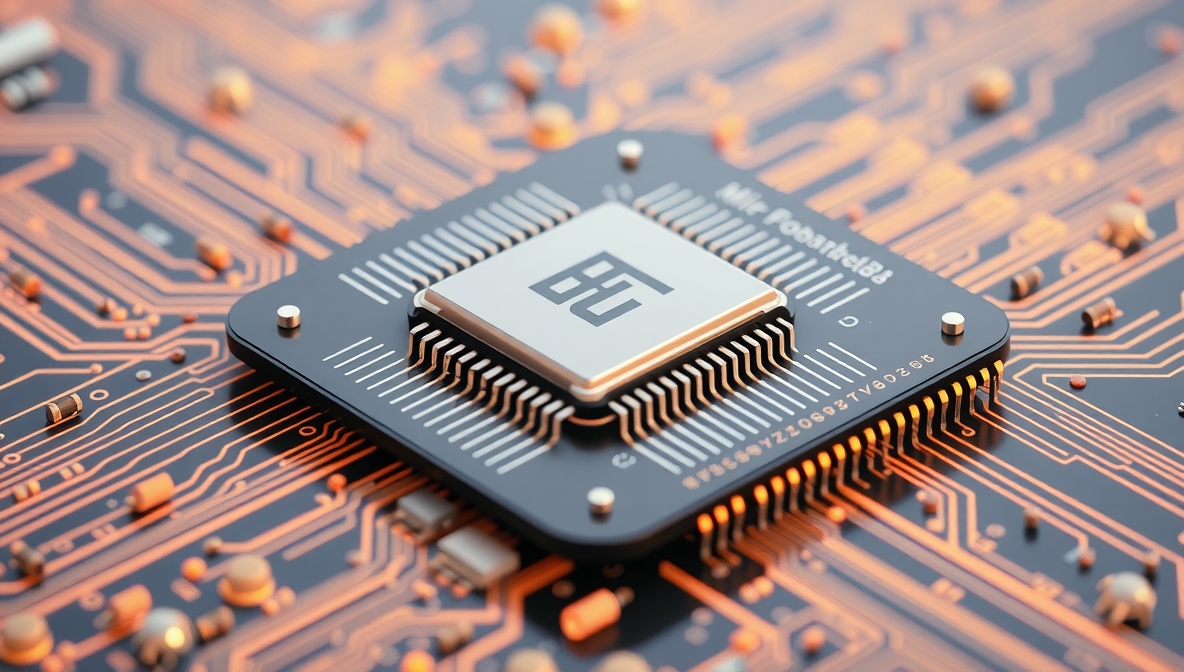Einleitung
In einer Welt, in der Technologie in jeden Aspekt unseres Lebens eingebettet ist, gibt es eine elektronische Komponente, die als schlagendes Herz der meisten intelligenten Geräte um uns herum dient: der Mikrocontroller. Diese kleine Komponente, oft nicht größer als ein Fingernagel, kombiniert eine Verarbeitungseinheit, Speicher und Eingabe-/Ausgabefähigkeiten auf einem einzigen Chip und ermöglicht es verschiedenen Geräten – von einfachen Spielzeugen bis hin zu komplexen industriellen Systemen – autonom und intelligent zu arbeiten.
What is a Microcontroller?
Ein Mikrocontroller ist ein winziger Computer, der alle grundlegenden Komponenten eines Computers (Prozessor, Speicher, Ein-/Ausgabeschnittstellen) auf einem einzigen Chip vereint. Im Gegensatz zu Standardprozessoren, die in Personal Computern verwendet werden, sind Mikrocontroller darauf ausgelegt, spezifische Aufgaben in eingebetteten Systemen auszuführen, also in Systemen, die in andere Produkte integriert sind.
A typical microcontroller includes the following components:
- Central Processing Unit (CPU): The brain of the microcontroller, which executes instructions and calculations.
- Program Memory (Flash Memory): Stores the software code that the microcontroller runs.
- Data Memory (RAM): Used for temporary storage of data during runtime.
- EEPROM: Non-volatile memory for permanent storage of data even when the device is powered off.
- Digital and Analog Ports: Allow communication with the external world.
- Timers: Enable time measurement and execution of precisely timed operations.
- Communication Interfaces: Such as UART, SPI, I2C, and others that enable communication with other components.
A Brief History of Microcontrollers
Der erste Mikrocontroller entstand 1971, als Intel den 4004 entwickelte, den ersten Ein-Chip-Prozessor. Der erste moderne Mikrocontroller war jedoch der TMS1000, der 1971 von Texas Instruments entwickelt wurde, gefolgt vom Intel 8048 im Jahr 1976.
Since then, the field has developed rapidly:
- In the 1980s, microcontrollers like Intel’s 8051 became an industry standard that is still used in modern versions.
- In the 1990s, microcontroller families like Microchip’s PIC and Atmel’s AVR (now owned by Microchip) offered improved performance at lower prices.
- In the 2000s, ARM-based microcontrollers began to spread, offering high performance with low power consumption.
- In the last decade, platforms like Arduino have made the use of microcontrollers accessible to beginners and hobbyists.
Popular Microcontroller Families
AVR
Die AVR-Familie, ursprünglich von Atmel entwickelt, ist eine der beliebtesten Familien unter Bastlern und Entwicklern. Sie dient als Grundlage für die populäre Arduino-Plattform.
PIC
PIC-Mikrocontroller, die von Microchip hergestellt werden, gehören zu den am häufigsten verwendeten in der Industrie, mit einer großen Vielfalt an Modellen, die für verschiedene Anwendungen geeignet sind.
ARM Cortex-M
Mikrocontroller auf Basis von ARM Cortex-M sind in den letzten Jahren aufgrund ihrer hohen Leistung und ihres niedrigen Energieverbrauchs sehr beliebt geworden. Sie werden in einer Vielzahl von Produkten eingesetzt, von medizinischen Geräten bis hin zu IoT-Geräten.
ESP8266/ESP32
These microcontrollers from Espressif have become particularly popular in the IoT field, thanks to their built-in WiFi and Bluetooth capabilities at a low price.
Common Uses
Microcontrollers are found in almost every modern electronic device:
- Home Appliances: Microwaves, washing machines, smart refrigerators
- Verbraucherelektronik: Remote controls, toys, digital cameras
- Transportation: Engine control systems, ABS, safety systems
- Kommunikation: Mobile phones, routers, modems
- Medicine: Medical equipment, monitoring devices, insulin pumps
- Industry: Robots, machine control, industrial automation
- IoT (Internet of Things): Smart sensors, smart home devices, environmental monitoring systems
Advantages of Microcontrollers
Microcontrollers offer several significant advantages:
- Low Cost: Basic microcontrollers cost less than one dollar in mass production.
- Small Size: Compact design allows integration into small products.
- Low Power Consumption: Some models can operate for years on a small battery.
- Reliability: The relatively simple architecture leads to fewer malfunctions.
- Flexibility: They can be programmed to perform a wide range of tasks.
- Ease of Development: Modern development tools enable relatively easy programming.
Herausforderungen und Beschränkungen
Despite their advantages, microcontrollers also present challenges:
- Limited Performance: Compared to personal computer processors, speed and power are limited.
- Limited Memory: The size of programs and data is constrained by available memory.
- Programming Complexity: Low-level programming requires a deep understanding of hardware.
- Challenging Debugging: Finding bugs in embedded systems can be complicated.
- Security: Many microcontrollers are not designed for high security, which poses a challenge in the IoT era.
Programming Microcontrollers
Programming microcontrollers is typically done in one of the following languages:
- C/C++: The most common languages for microcontroller programming, offering a good balance between ease of use and performance.
- Assembly: Allows precise control and maximum efficiency, but is more complex to write and maintain.
- MicroPython/CircuitPython: Lightweight versions of Python that allow easier programming at the expense of performance.
- Arduino IDE: A simple development environment based on C++ with libraries that make usage easier.
The Future of Microcontrollers
With the development of the Internet of Things (IoT) and smart devices, microcontrollers continue to evolve in several directions:
- Advanced Capabilities: New models incorporate graphics processing, machine learning, and AI capabilities.
- Geringerer Energieverbrauch: Modern microcontrollers can operate with minimal energy consumption, enabling applications powered by environmental energy (Energy Harvesting).
- Improved Security: Manufacturers are implementing more security mechanisms in response to growing cyber threats.
- Integration: Microcontrollers incorporate more auxiliary components such as wireless communication interfaces and advanced analog circuits.
- Transition to Advanced Manufacturing Processes: Using advanced manufacturing technologies allows the creation of smaller and more efficient microcontrollers.
Schlussfolgerung
Der Mikrocontroller ist eine der wichtigsten und häufigsten elektronischen Komponenten in unserer Welt. Trotz seiner geringen Größe ist seine Auswirkung auf das moderne Leben enorm. Mit der fortschreitenden Entwicklung der Technologie wird erwartet, dass Mikrocontroller weiterhin eine zentrale Rolle bei technologischen Innovationen spielen und die nächste Revolution intelligenter und vernetzter Geräte ermöglichen.
Das Verständnis der Grundlagen von Mikrocontrollern ist nicht nur für Elektronikingenieure wichtig, sondern auch für Entwickler, Produktdesigner und alle, die daran interessiert sind, unsere technologische Zukunft zu verstehen und mitzugestalten.














